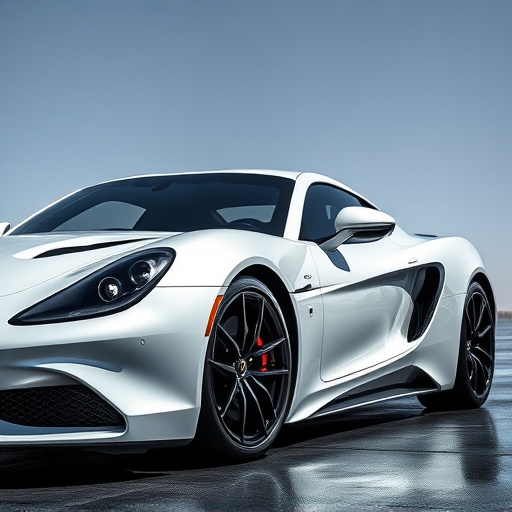Performance-driven vehicle owners seeking optimal engine efficiency and driving experience must prioritize air intake filter sizes comparison. By evaluating airflow rate, pressure drop, and particle capture efficiency, users can match their vehicle's needs with a suitable filter size. This process ensures enhanced airflow while maintaining engine health. When comparing air intake filter sizes, factors like vehicle make/model, environmental conditions, driving habits, filter media type, efficiency ratings, cost, and compatibility must be considered to make an informed choice.
Performance requirements sizing is a critical step in selecting the right air intake filter for your vehicle. This comprehensive guide delves into the essentials of understanding and deciphering air intake filter sizes, offering valuable insights for car enthusiasts and professionals alike. By comparing different models and considering key factors, you’ll be equipped to make informed choices that enhance engine performance while ensuring optimal filtration. Explore these sections to uncover the secrets behind successful air intake filter sizing and comparison.
- Understanding Performance Requirements Sizing: A Foundation for Air Intake Filter Selection
- Deciphering Air Intake Filter Sizes: Unveiling the Comparison Between Different Models
- Making Informed Choices: Factors to Consider When Comparing Air Intake Filter Sizes
Understanding Performance Requirements Sizing: A Foundation for Air Intake Filter Selection

Performance requirements sizing forms the critical foundation for selecting the optimal air intake filter, especially in automotive applications. It involves understanding the specific demands of an engine and matching them with a filter that can efficiently meet these needs. This process begins by evaluating factors such as air flow rate, pressure drop, and particle capture efficiency required to maintain or enhance engine performance.
When considering air intake filters, a direct correlation exists between the filter’s size and its capacity to handle varying conditions. Through a comparison of different air intake filter sizes, users can make informed decisions based on their vehicle’s requirements. This ensures that the chosen filter aligns with the desired airflow while also maintaining optimal engine health, ultimately enhancing overall driving experience through efficient and effective air filtration.
Deciphering Air Intake Filter Sizes: Unveiling the Comparison Between Different Models

When it comes to performance requirements, especially in automotive modifications, understanding air intake filter sizes is paramount. Different models of air intake filters cater to various vehicle types and power needs. A thorough comparison reveals key differences not just in physical dimensions but also in material composition, airflow capabilities, and compatibility with specific engine setups.
For instance, high-flow filters designed for racing applications may have larger sizes and more open structures to maximize airflow, while universal or stock filters tend to be more compact, focusing on efficient debris capture without significantly obstructing the air path. This air intake filter sizes comparison is crucial for enthusiasts aiming to optimize their vehicles’ performance, ensuring the right fit and functionality for their desired outcome.
Making Informed Choices: Factors to Consider When Comparing Air Intake Filter Sizes

When comparing air intake filter sizes, making informed choices requires considering several factors. These include the make and model of your vehicle, as different cars have varying engine requirements and specifications. Additionally, environmental conditions play a significant role; for instance, dusty or polluted areas necessitate larger filters capable of capturing more contaminants. The type of driving you do matters too – aggressive driving in rough terrain demands stronger filters compared to regular commuting.
Furthermore, filter media type and efficiency ratings are crucial. High-performance filters with advanced media types offer better airflow and dust-capturing capabilities. Efficiency ratings indicate the percentage of particles trapped, ensuring optimal engine performance. Finally, cost and compatibility should be balanced; while larger, high-end filters might provide superior protection, they also come at a higher price point and may require modifications for installation.
Performance requirements sizing is a crucial step in selecting the ideal air intake filter. By understanding the fundamentals, deciphering filter sizes, and considering key factors, car enthusiasts can make informed choices. A thorough comparison of different models allows for an accurate match between engine needs and filtration capabilities, ensuring optimal performance and extending engine life. When it comes to air intake filters, knowing your vehicle’s requirements and comparing sizes effectively is a game-changer for maintaining peak engine health.














